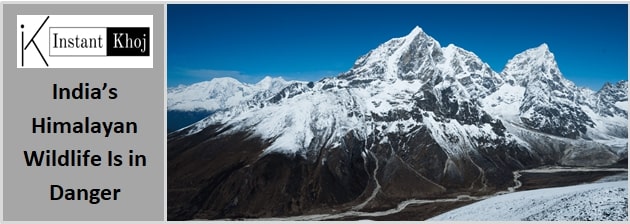The Western Himalayas, stretching across the northern states of India including Himachal Pradesh, Uttarakhand, and Jammu & Kashmir, are among the most ecologically significant regions on the planet. Recognized as a global biodiversity hotspot, this fragile mountain range supports thousands of unique plant and animal species, many of which are found nowhere else on Earth. However, increasing environmental pressures, coupled with changing human activities, are threatening this natural treasure. At the same time, conservation initiatives and community-led efforts offer hope for preserving both the region’s biodiversity and its traditional mountain way of life.
A Natural Treasure Trove
The Western Himalayas host an extraordinary range of ecosystems, from alpine meadows and dense coniferous forests to glacial rivers and subalpine scrublands. These environments provide shelter to a rich variety of species, including several that are classified as endangered or vulnerable.
Among the most iconic of these is the snow leopard, a reclusive and majestic predator that roams the high-altitude ranges. Known as the “ghost of the mountains,” the snow leopard plays a crucial role in maintaining the ecological balance of the Himalayas. Conservation programs across India—such as the SECURE Himalaya project, launched in collaboration with the United Nations Development Programme (UNDP)—aim to protect snow leopard habitats while involving local communities in wildlife monitoring and sustainable livelihoods.
Another celebrated species is the Himalayan monal, India’s national bird of Himachal Pradesh. With its dazzling iridescent plumage, the monal is a symbol of the region’s rich natural heritage. Yet, like many native species, its population is increasingly at risk due to habitat degradation and human disturbance.
Threats to Biodiversity
Despite its ecological importance, the Western Himalayan region faces growing environmental threats. Climate change is altering weather patterns, reducing snow cover, and shifting the ranges of many plant and animal species. Warmer temperatures have led to glacial retreat, disrupted water cycles, and changing vegetation patterns—challenges that deeply affect both wildlife and human communities.
Deforestation, unplanned development, road construction, and expanding tourism also contribute to habitat loss and fragmentation. Illegal wildlife trade and poaching remain concerns in some remote areas, particularly for endangered species like the snow leopard and musk deer.
Moreover, traditional farming and grazing practices, once sustainable, are being replaced by commercial agriculture and monoculture plantations, which can deplete soil quality and reduce biodiversity.
The Role of Local Communities
In response to these threats, local communities and indigenous groups have become central players in the fight to preserve the Himalayan environment. In many villages across the Western Himalayas, residents are reviving traditional agricultural methods that are better suited to the mountain ecology. Crops like millets, buckwheat, and barley—which are resilient to changing climates—are being promoted for both their nutritional value and environmental sustainability.
Community-based conservation programs have shown success in reducing human-wildlife conflict, promoting forest stewardship, and creating income through eco-tourism. For example, village-based homestays and wildlife tours not only raise awareness among visitors but also offer economic incentives for locals to protect their natural surroundings.
Women in particular have taken leading roles in environmental preservation through self-help groups, seed-saving cooperatives, and local biodiversity committees.
Government and NGO Initiatives
Several conservation and development programs, supported by the Indian government and non-governmental organizations, are currently in place to protect Himalayan biodiversity. Projects like the National Mission on Himalayan Studies and the Himalayan Forest Research Institute focus on ecological research, afforestation, and climate resilience strategies.
International collaborations—such as India’s partnership in the Global Snow Leopard and Ecosystem Protection Program (GSLEP)—further strengthen conservation planning at a regional level, including cooperation with neighboring countries like Nepal and Bhutan.
A Path Forward
Protecting the Western Himalayas requires a balance between ecological conservation and the sustainable development needs of the people who live there. Long-term strategies must prioritize ecosystem health, traditional knowledge, and adaptive resource management to withstand the pressures of climate change.
Education, local empowerment, and continued investment in conservation science will be key to preserving this globally important biodiversity hotspot. The story of the Western Himalayas is not just one of fragility and threat, but also of resilience, cultural richness, and hope.
Conclusion
India’s Western Himalayas stand as one of the last great natural bastions of biodiversity in the world. Home to iconic species like the snow leopard and Himalayan monal, and steeped in centuries of traditional mountain wisdom, the region represents a delicate balance between people and nature. As environmental pressures mount, a growing movement of conservationists, scientists, and community members is rising to ensure that this extraordinary landscape—and the life it sustains—can thrive for generations to come.



